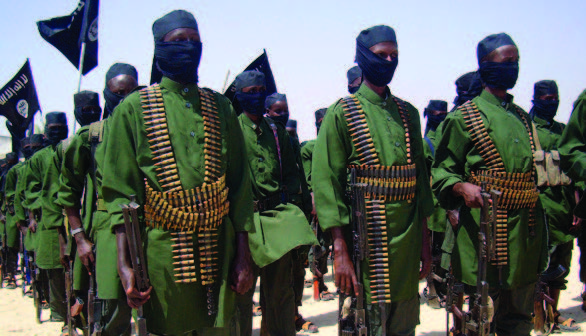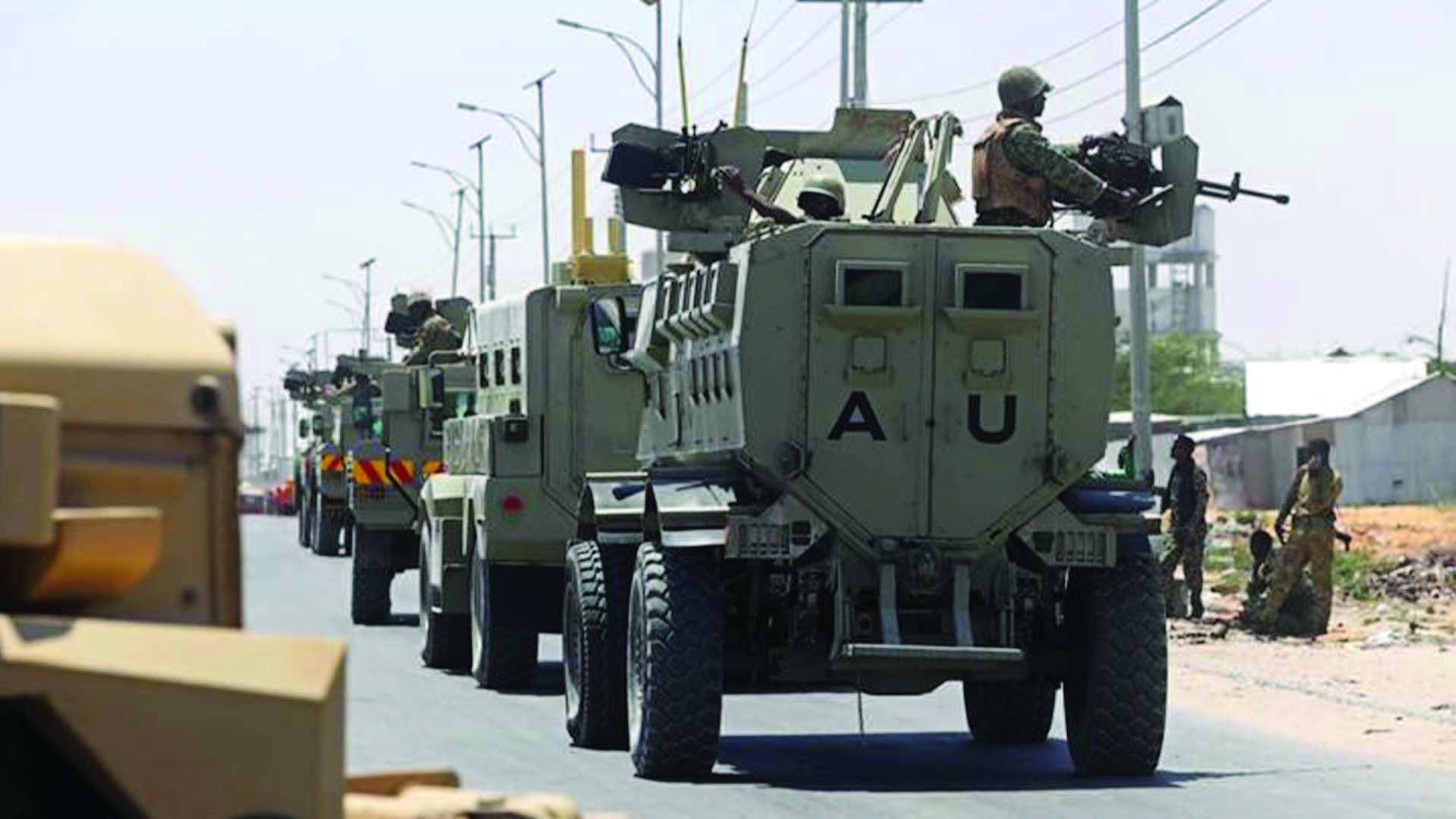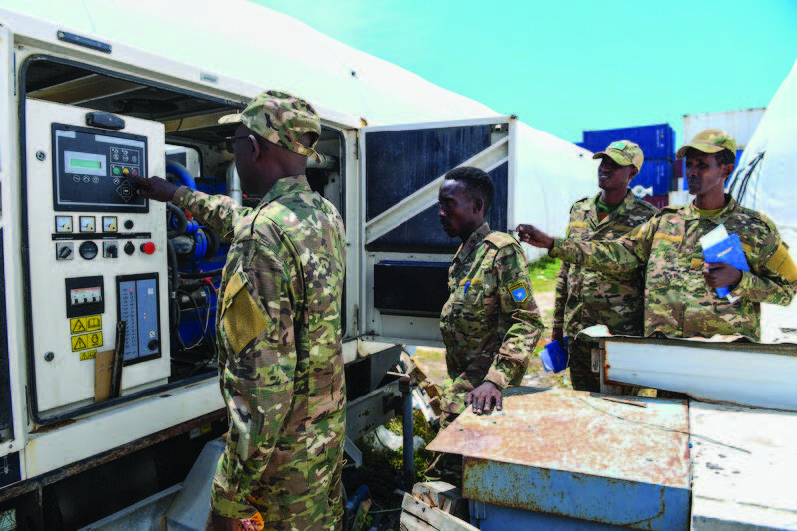
In adopting United Nations Security Council Resolution (UNSCR) 2741 (2024) on June 28, 2024, the United Nations Security Council (UNSC) affirmed that Al- Shabaab (AS) continues to pose a serious threat to peace and stability in Somalia and the broader Horn of Africa (HoA) region. UNSCR 2741 (2024) extended the UN’s authorization of the African Union Transition Mission in Somalia (ATMIS) until August 12, 2024[1]. The resolution also recommended including an exit strategy and progress indicators in the concept of operations being developed by the African Union Peace and Security Council (AUPSC) in collaboration with the Federal Government of Somalia (FGS) and other stakeholders, to be submitted to the UN by July 31, 2024. This follows the AUPSC’s endorsement of Somalia’s request to create a new peace support mission to succeed ATMIS after its exit from Somalia on December 31, 2024[2]. The new arrangement will be an AU-led, UN-authorized peace support mission (PSO) starting January 1, 2025. The mission’s mandate encompasses providing stabilization support, facilitating state-building efforts, and securing strategic population centers and vital infrastructure[3]. This transition aims to address the evolving security landscape in Somalia, particularly the ongoing threat posed by AS. Therefore, this commentary evaluates prospects and potential challenges of the new mission, taking into account the historical context of AU peacekeeping efforts in Somalia and the evolving security and political landscape.
Somalia has grappled with instability and violence since the collapse of Siad Barre’s government in 1991, with AS posing a persistent threat to its peace and security. The African Union (AU) has played a crucial role in supporting the Somali government through both African Union Mission in Somalia (AMISOM), established in 2007 and its successor, ATMIS in 2022. These missions have achieved significant milestones, including the liberation of key areas from AS and the training of Somali security forces. The upcoming transition to a new African Union (AU) led post ATMIS mission, aims to build on past successes while addressing ongoing challenges and preserving the hard-won gains made in the last 17 years.

The change from AMISOM to ATMIS in April 2022 presented its own set of challenges as Somalia prepared to assume its own security responsibilities. Concerns have emerged about Somalia’s readiness to independently manage security, particularly with ATMIS planning to withdraw by December 2024. Experts have warned that Somalia remains vulnerable as the country’s efforts to build its own forces have not been in tandem with the drawdown of ATMIS personnel[4]. Acknowledging these concerns, the FGS requested a new peace support mission to replace ATMIS. Additionally, it requested a phased withdrawal of 4,000 ATMIS troops, initially scheduled for the end of June 2024. The AUPSC endorsed this request in its June 2024 communiqué, advocating for a phased withdrawal with the first tranche by the end of June 2024 and the second by the end of September 2024[5].

It is crucial for the new AU-led mission to address past funding challenges in order to achieve its objectives of facilitating a smooth transfer of security responsibilities to Somalia and weakening of AS. Previous missions such as AMISOM and currently ATMIS have been faced with financial capacity shortfalls that have hindered their intended mandates[6]. Securing consistent and adequate resources remains a critical challenge. Financial constraints will limit the new mission’s effectiveness and operational scope. Moreover, given the numerous global conflicts, traditional donors in the Horn of Africa (HoA) are experiencing donor fatigue. For instance, the EU, a key donor to AMISOM and ATMIS, reduced its support to the ATMIS military component from 140 million Euros in 2022 to 85 million Euros in 2023[7].
As emphasized by the AUPSC and the UN through UNSCR 2741 (2024), securing sustainable, predictable, and adequate funding is a critical aspect for the operationalization of the new mission. They therefore, called for diversified international support to bolster the mission’s operational capabilities. UNSCR 2741 (2024) requests a range of options to be explored for financing the new mission, including through UNSCR 2719 (2023). UNSCR 2719 (2023) allows the AUPSC to request UN-assessed contributions for peace support operations on a case-by-case basis, with the UN providing 75% of the funding and the remaining 25% jointly mobilized by the two organizations[8]. Given the recurring challenge of securing sustainable funds for AU peace support operations in Somalia, UNSCR 2719 presents a valuable opportunity to strengthen and implement the UN-AU partnership on peace and security in a more efficient and practical manner. Additionally these efforts can be complemented by the AU Peace Fund, which serves as the primary instrument for financing peace and security initiatives in Africa.
As advocated by the AUPSC, the new mission must be in line with Somalia’s current political and security realities. Somalia’s political landscape is marked by internal divisions and power struggles between the federal government and the federal member states (FMS), such as Somaliland. For the new mission to be more effective than its predecessor, political cohesion between the FGS and its FMS is essential as divisions negatively impacts on Somalia’s readiness to assume its own security responsibilities. A nation divided cannot effectively combat its adversaries. Therefore, securing political unity and backing for the new mission from all stakeholders is imperative.
Further, AS remains a formidable threat, capable of conducting serious attacks in Somalia and neighboring states. The new concept of operations, with its structured approach, to include clear indicators, milestones, and exit strategy, provides a robust foundation for the mission. The AU, in consultation with the FGS and other relevant stakeholders, should submit this concept to the UNSC by July 31, 2024. The UNSC will then schedule a meeting by August 2, 2024, to review it and decide on the next steps. This framework aims to ensure accountability and measurable progress. Nonetheless, the operational concept set to be developed and submitted to the UN needs to be tailored to reflect the group’s resilience and adaptability. AS is highly skilled in drone operations, where it continually innovates new methods to deploy Improvised Explosive Devices (IEDs). Furthermore, the group also possesses a robust intelligence network and utilizes open-source geographical information platforms to obtain target coordinates for their attacks[9]. Against this backdrop, the group’s resilience is an important aspect for consideration in the development of the operational concept.

Implementing a phased drawdown of ATMIS while establishing the new mission requires careful management to avoid security vacuums. Critics have argued that earlier plans prioritized rapid timelines driven by political motives, rather than realities on the ground[10]. This rush has often resulted in insufficiently prepared local forces, exacerbating security challenges and undermining long-term stability. This is affirmed by the AUPSC which confirms that the ongoing offensive operations against AS and the complete implementation of Phase 3 drawdown could create capability gaps, potentially having significant implications for Somalia’s security[11]. For instance, in March 2024, the Somali National Army (SNA) faced significant setbacks particularly in the states of Galmudug and Hirshabelle after AS recaptured several areas. This occurred after security forces vacated several bases amid reported internal disputes over logistical failures, corruption, and power struggles[12]. A complete transition is a long-time process, requiring sufficient time to develop the Somalia security sector. Therefore, the focus on Somalia’s security sector development plan should prioritize gradual force generation, training and equipping of the security personnel before and after the ultimate withdrawal of ATMIS.

The prospects for the new AU-led post-ATMIS mission in Somalia are promising, given the strategic framework and international support outlined in Resolution 2741 (2024). However, significant challenges persist, including resource constraints, internal power wrangles, AS resilience and ongoing security threats. To address these challenges, the AUPSC in collaboration with FGS and UN should diversify international support to mitigate the impact of donor fatigue and fluctuations in funding, ensuring adequate resources for effective operations. Moreover, FGS and its federal member states should strengthen national cohesion and support for the mission thereby unifying their efforts against AS. While developing the concept of operations, the AUPSC should tailor it to target AS’s resilience and its evolving tactics, including drone use and sophisticated intelligence capabilities. The new mission should therefore implement strategies that anticipate and counter AS’s operational strengths to enhance mission effectiveness. As the new mission replaces ATMIS, prioritization should be given to developing and building the capacity of Somalia’s security forces through comprehensive training, equipping, and force generation programs. However, the challenge of conflicting military doctrines and techniques introduced by various training actors, such as Turkey, the United Arab Emirates (UAE), the EU, the United Kingdom (UK), Uganda and Ethiopia, must be taken into consideration
[13]. Additionally, the FGS with support from international partners should professionalize the security sector and improve working conditions and salaries for security forces to prevent them from being swayed by financial incentives elsewhere. Strengthening local security capabilities is essential for sustaining long-term stability and security in Somalia even as the new mission plans its comprehensive exit strategy. As the mission progresses, continuous evaluation and adaptation will also be essential to navigate these challenges and achieve lasting peace and stability in Somalia.
Notes
[1] Security Council Extends Authorization of African Union Transition Mission in Somalia
[2] UN Funds for AU Peace Operations: Somalia as a Test Case
[3] Briefing on the Situation in Somalia: ATMIS
[4] AU Report Delays Plan for Somalia’s Post-ATMIS Force
[5] How Somalia Can Avoid an Al-Shabaab Takeover
[6] One Year of ATMIS Operations: Progress, Challenges, and Funding
[7] One Year of ATMIS Operations: Progress, Challenges, and Funding
[8] Will Resolution 2719 Be a Game Changer for ATMIS?
[9] Al-Shabaab Creates Deadly Pan-East African Force
[10] Somalia Will Require Foreign Troops Past ATMIS Exit
[11] ATMIS Hands Over Third Military Base to Somalia Forces
[12] AU Report Delays Plan for Somalia’s Post-ATMIS Force
[13] Somalia is Still Fragile: What the New African Union Mission Can Do to Help Stabilize It
